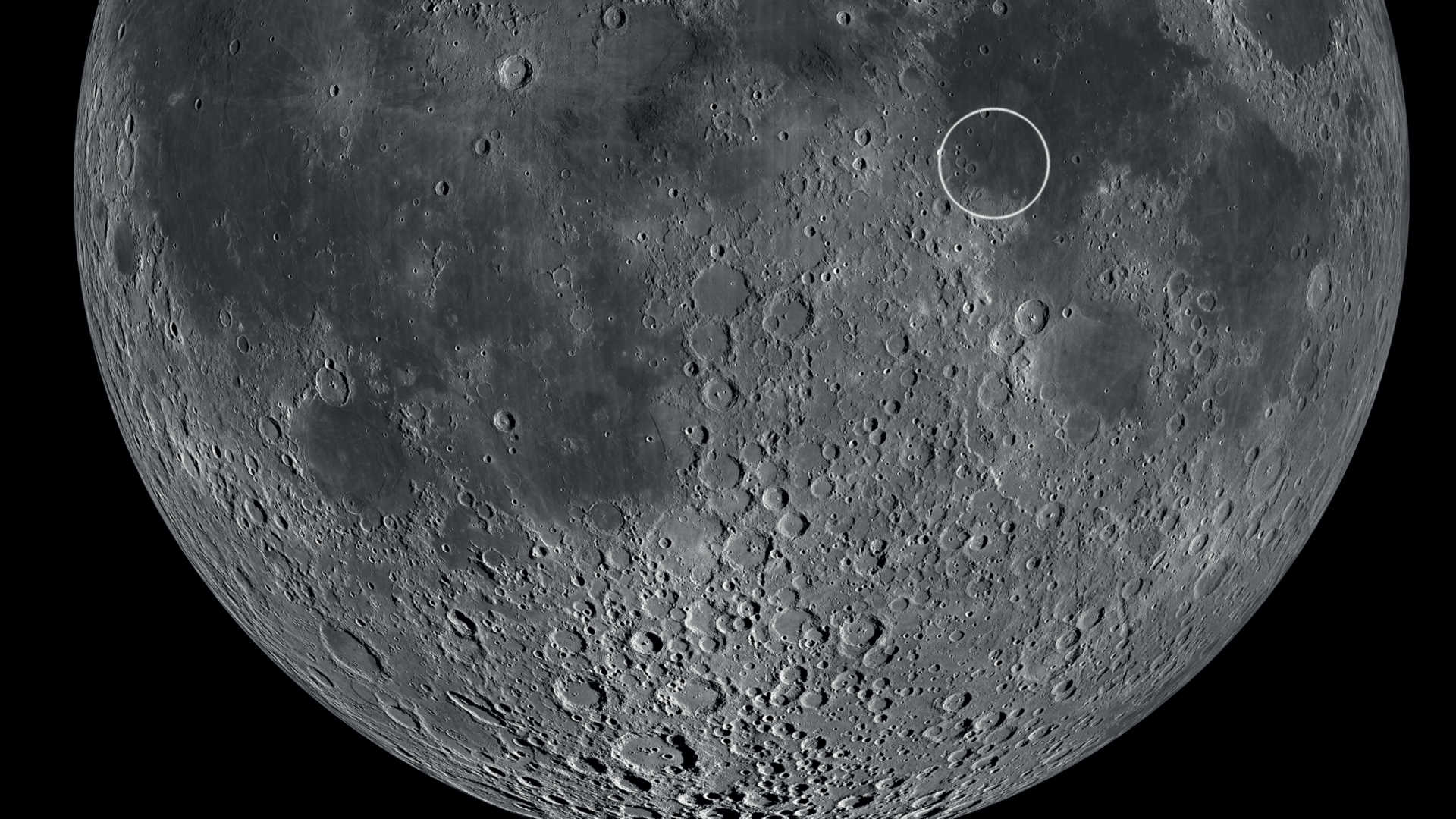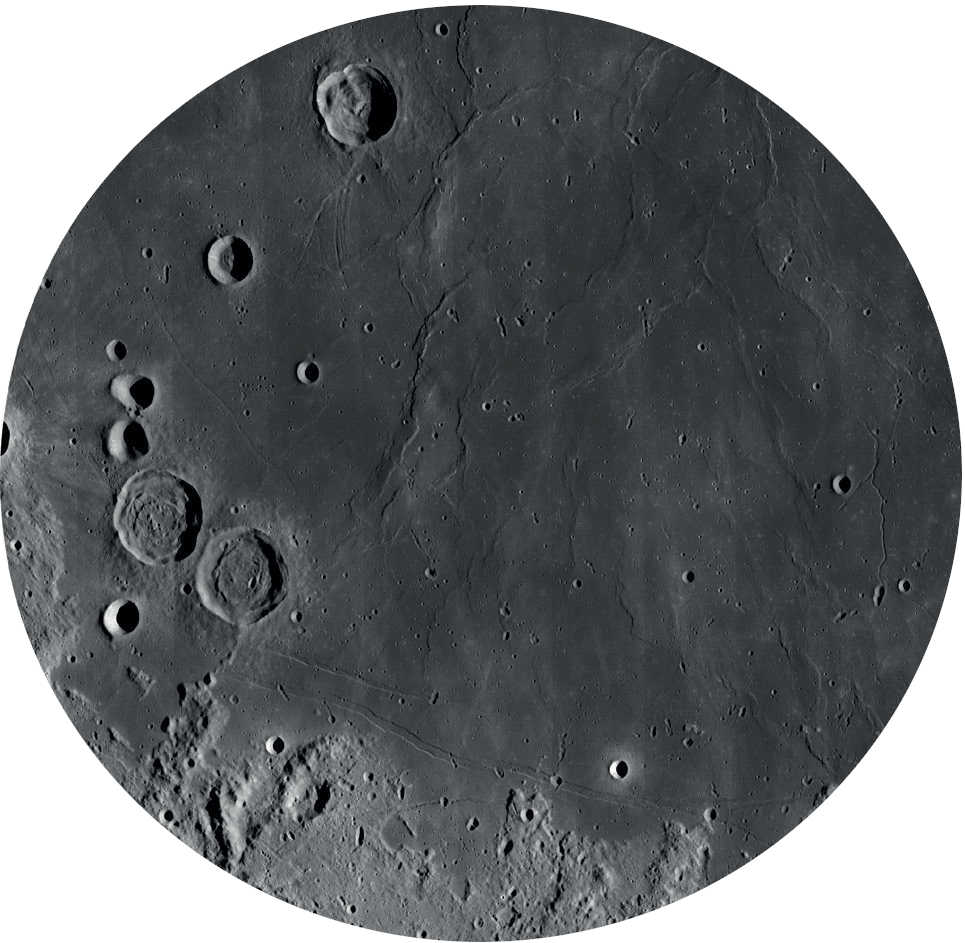The Eagle has landed
The first manned Moon landing took place in the south-west of the Mare Tranquillitatis.
 The first manned Moon landing took place in the south-west of the Mare Tranquillitatis. NASA/GSFC/Arizona State University
The first manned Moon landing took place in the south-west of the Mare Tranquillitatis. NASA/GSFC/Arizona State University"Houston, Tranquility Base here. The Eagle has landed." is probably one of the most famous phrases in the history of space flight. It was spoken by the American Apollo 11 astronaut Neil Armstrong on 20 July 1969 at 22:17 CEST, after the Lunar Module Eagle successfully touched down on the surface of Mare Tranquillitatis (Sea of Tranquillity). Every bserver who takes a trip to the Moon with his telescope should make a detour to this historical site, in order to get as close as possible to the events of the time - at least visually-speaking.
First orientation with Sabine and Ritter
 To the east of the two craters
Sabine and Ritter lies the so-called
Statio Tranquillitatis. NASA/GSFC/Arizona State University
To the east of the two craters
Sabine and Ritter lies the so-called
Statio Tranquillitatis. NASA/GSFC/Arizona State UniversityThe two craters Sabine (30 km) and Ritter (29 km) will serve as the starting point for our tour of the scene of the first manned Moon landing. They appear to be an almost-identical pair in the south-west corner of Mare Tranquillitatis. A gap of just a few kilometres separates the two impact craters. In both craters, the walls have largely slipped into the interior.
Sabine and Ritter also seem to have a very similar interior floor: lava-filled, relatively flat and with some broad concentric elevations. To the north of Ritter, the two satellite craters Ritter C (14 km) and Ritter B (14 km) are equally close together.
Base in the Sea of Tranquillity
The so-called Tranquility Base, the exact landing point of the Lunar Module, was officially recorded on lunar maps as Statio Tranquillitatis in the 1970s. Three small craters in the vicinity were named Aldrin, Collins and Armstrong in honour of the three Apollo 11 astronauts. Sabine and Ritter are perfect for visually locating where the landing occurred. To do this, extend a curved arc from Ritter B, Ritter C, Ritter and Sabine towards the east. If the seeing is good, Aldrin (3 km) will be the first of the three craters that you come to.
Further east, Collins (2 km) and Armstrong (4 km) follow at equal intervals. This requires a powerful telescope with an aperture of 100 mm or more. To get even closer to Statio Tranquillitatis you’ll need to find the satellite crater Sabine C (3 km), which is located southeast of Aldrin, but which is more difficult to identify than the three craters that lie to the north.
Best visibility 6 or 19 days after New Moon
Author: Lampert Spix / Licence: Oculum-Verlag GmbH
